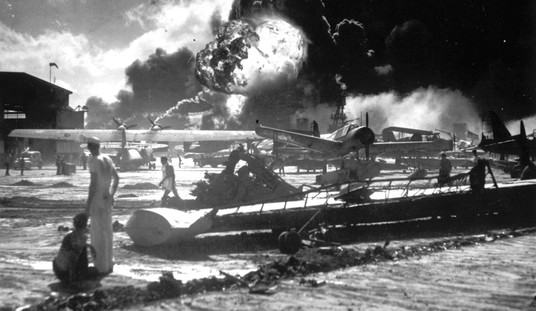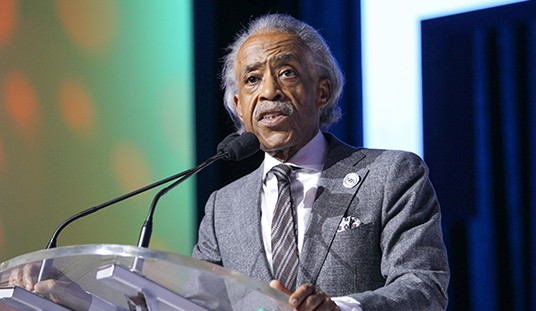Editor’s Note: This is the last list in Kyle Smith’s series ranking films by decade, an expansion of his top 10 films of the 1930s list from July of 2014 here. Previously he expanded his ’00s list to a top 20 here, his ’90s list here, his ’80s list here, his ’70s list here, his ’60s list here, his ’50s list here, and his ’40s list here. Also see his list of the Click here to read “What Makes a Great Movie?,” Kyle’s essay explaining his criteria for these lists.
20. Duck Soup (1933)
The Marx Brothers’ freewheeling word association, irreverence and physical comedy were all in high gear in their funniest film, in which Groucho plays Rufus T. Firefly, the appointed ruler of the fictional land of Freedonia. The much-imitated mirror scene is a tour de force of precision physical comedy.
https://www.youtube.com/watch?v=PG3NZjRv2nM
19. The Thin Man (1934)
The more depressing the Depression got, the more audiences wanted escapism like gilded musicals and drawing-room comedies set among the martini-sipping elite. William Powell and Myrna Loy, as Nick and Nora Charles, created one of the most enduring franchises of the era as a married pair of penthouse-dwelling private eyes who would go on to spark five sequels.
18. Wuthering Heights (1939)
Laurence Olivier’s blistering performance as the reviled and misunderstood Heathcliff, a ragamuffin turned landowner, rules this shivery, romantic Victorian ghost story. Heathcliff’s lifelong battle to win over the higher-class girl with whom he is raised, Cathy (Merle Oberon), is doomed by his low birth but his raging dedication to her gives the film its agony and its passion. https://www.youtube.com/watch?v=oClFiO7LMkc
17. Scarface 1932
Violent and chaotic, Howard Hawks’ film about a thinly disguised version of Chicago Prohibition-era gangster Al Capone (Paul Muni) was initially considered too hot to release in an era when films were expected to emphasize at every turn that crime was not glamorous. As Tony’s coin-flipping sidekick, George Raft made a huge impression, underscoring the cold thoughtlessness of professional killers.
https://www.youtube.com/watch?v=MXb1QqmrRNc
16. Captain Blood (1935)
Not until Johnny Depp took on Captain Jack Sparrow more than six decades later would there be such a glorious pirate yarn as Michael Curtiz’s spectacular adventure starring Errol Flynn. Flynn plays Peter Blood, an innocent English doctor arrested on spurious charges in the 17th century and sold into slavery in the Caribbean — where Blood escapes, becomes a pirate and sets about reversing his fortune. As they later would be in The Adventures of Robin Hood, Olivia de Havilland and Basil Rathbone are stellar as the love interest and the villain respectively.
https://www.youtube.com/watch?v=kCIrT23Hef8
15. It Happened One Night (1934)
A sly, naughty sex comedy that barely sneaked into theaters just as Hollywood’s self censoring Hays Office swung into action to place almost absurd limits on what could be implied about lovers, this Clark Gable-Claudette Colbert classic swept the Oscars. Gable plays a rascally newspaper reporter and Colbert a snooty runaway bride in a breezy road trip.
14. King Kong (1933)
A then-masterful extravaganza of special effects, this contemporary fairy tale used stop-motion models to create the title character, a noble beast misunderstood as a rampaging monster after being taken in chains from his native island and made to perform onstage in New York, where he finally breaks free again. Like other great fairy tales, it tells a rousing story but also has allegorical implications that can be read in several ways.
13. The Awful Truth (1937)
Witty and waspish Cary Grant and Irene Dunne make for one of the screen’s most dynamic couples, as a soon-to-be-divorced pair who set about to sabotage each other’s new mates, with Ralph Bellamy (as he later would in His Girl Friday) giving able support as the guy who isn’t Cary Grant. One of the templates for the sophisticated, urbane, fast-talking screwball comedies of the era, it won a Best Director Oscar for Leo McCarey.
12. I Am a Fugitive from a Chain Gang (1932)
Warner Bros.’ long tradition of gritty, intense pictures about crime and punishment was already underway in 1932, when Paul Muni turned in a rich and textured performance as a decent man who falls into a life of crime and receives disproportionately harsh punishment on a Southern chain gang. The film would serve as a model for generations of social-justice movies in which individuals were victimized by forces beyond their control, and as such it helped provide the narrative backbone for much of 20th century liberalism and its rejection of personal moral agency. Despite its didactic nature, though, it’s a thrilling, evocative drama.
https://www.youtube.com/watch?v=Nz-vDLCOzhk
11. Only Angels Have Wings (1939)
Presaging the bravery of WW II, the film is set in a fictional South American town where tough, fatalistic pilots whose airfield is surrounded by mountains have a close relationship with death. The entrance of the scene of a woman (Jean Arthur) unaccustomed to the mens’ bravado threatens to upend the equilibrium of the environment, to the distaste of the most dashing of the pilots, played by Cary Grant. Director Howard Hawks’ downbeat tone and his staging of the gripping flight sequences are why it’s the finest drama he ever made.
10. Goodbye, Mr. Chips (1939)
The Dead Poets Society model for movies about teachers who create endless opportunity by opening up the potential of young minds can be traced to this heartfelt British boarding-school classic, whose title character was so unforgettable that Robert Donat captured the Best Actor Oscar over Clark Gable in Gone with the Wind.
https://www.youtube.com/watch?v=2yNLZrS-bo0
9. Midnight (1939)
Before the tired, recycled formulas of romantic comedies, Hollywood’s cleverest minds specialized in screwball comedies characterized by breathless, twisty plotting and tart dialogue. Co-written by greats Billy Wilder and Charles Brackett before Wilder became a director, this Paris-set whirlwind starred John Barrymore and Claudette Colbert in their prime.
8. Ninotchka (1939)
Greta Garbo’s greatest gamble — she was known exclusively as a dramatic actress at the time — turned into her greatest success. Playing a Soviet agent sent to Paris who expects to sneer at the degradations of capitalism and democracy, she instead finds herself swept away by the glamour and a bourgeois love affair with a dashing count (Melvyn Douglas). The unsurpassed light-comic director Ernst Lubitsch and Hollywood’s most accomplished cynic, screenwriter Billy Wilder, proved a combination for the ages.
https://www.youtube.com/watch?v=ncMKymAOy1I
7. Snow White and the Seven Dwarfs (1937)
Advancing cartoons from slapstick short subjects to lush, dramatic, feature-length storytelling, Walt Disney all but created a new artistic form with this still-irresistible fable of love and jealousy.
https://www.youtube.com/watch?v=aiObc2XmVqw
6. All Quiet on the Western Front (1930)
The intensity of the battleground scenes in this anti-war drama told from the German side of WWI would not be matched onscreen until 1957’s Paths of Glory. Hollywood in the 1930s was even more slanted toward the side of amusing entertainment than it is today, so this devastating warning about the dangers of being led into war by jingoism stands as a landmark, decades ahead of its time.
5. Mutiny on the Bounty (1935)
A true story so compelling it has been made into five feature-length films was never better done than in the Frank Lloyd-directed version that brought together a spellbinding pair of adversaries: Charles Laughton as the imperious Capt. Bligh and Clark Gable as the reluctant mutiny leader Fletcher Christian. The clash of personalities, the vividness of the maritime details and the sense of grand adventure with high stakes set it apart.
4. Top Hat (1935)
Fred Astaire and Ginger Rogers were always delightful together, but this one had the script, the songs and the sophistication that made it a classic among classics. Irving Berlin songs like “No Strings (Fancy Free)” and “Top Hat, White Tie and Tails” typified studio dazzle, but the film saves its best for the climax: the indelible performance of “Cheek to Cheek,” the apex of Hollywood musical romance.
3. The Adventures of Robin Hood (1938)
Every few years Hollywood takes another crack at the Robin Hood story, but the Errol Flynn and Olivia de Havilland Warner Bros. version, directed by Michael Curtiz before he went on to do Casablanca, is the one that heaves with swashbuckling, love and villainy as personified by Basil Rathbone. With its fast pace and cutting dialogue, it’s a medieval tale that still feels fresh and modern.
2. The Wizard of Oz (1939)
Nearly every scene of this brilliantly imagined film holds a line or a detail that exerts a grip on the memory. Its take on the journey from childhood into the scary unknowns of growing up is ultimately a comforting, conservative reassurance that we are not truly ourselves without the grounding of our families.
https://www.youtube.com/watch?v=ZcuRaAi5MF0
1. Gone with the Wind (1939)
Morally flawed but cinematically unsurpassed, Victor Fleming’s other 1939 project — the gig he took over from fired director George Cukor right after The Wizard of Oz — was sold on its historical sweep and its sexiness, both of which are highly entertaining, but it’s the psychological depth of the four lead characters that make the film so gripping. Nor does the film have many equals when it comes to the beauty of the photography, notably in the “as God is my witness” scene that closes the first half, still perhaps the most awe-inspiring sequence put on film.









Join the conversation as a VIP Member